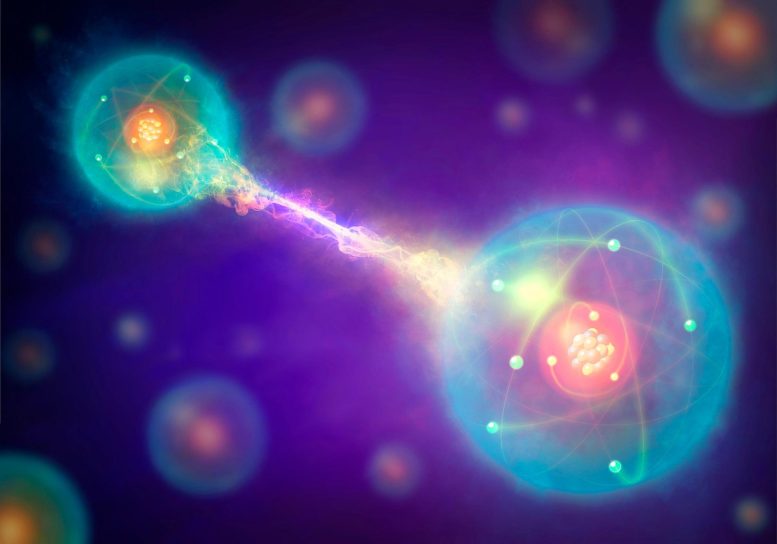
Quantum physicists from the University of Bristol and Hungarian Academy of Sciences have teamed together on new research that takes a step forward in understanding quantum inseparability. Through their research, they are able to show that the weakest form of entanglement can lead to quantum nonlocal correlations, the strongest form of inseparability in quantum mechanics.
New research from the University of Bristol may disprove a long-standing conjecture made by one of the founders of quantum information science: that quantum states featuring ‘positive partial transpose’, a particular symmetry under time-reversal, can never lead to nonlocality.
When it comes to space and time, modern physics defies our intuition in the most dramatic way. Einstein’s relativity theory tells us that time and space are intimately related and that absolute time is an illusion. Quantum mechanics, however, is at rest, and its predictions are perhaps even more astonishing than those of relativity.
In a nutshell, quantum theory tells us that two entangled particles behave as a single physical object, no matter how far apart they are. If a measurement is performed on one of these particles, the state of its distant twin is instantaneously modified.
This effect leads to quantum nonlocality, the fact that the correlation between results of local measurements performed on these particles is so strong, that they could not have been obtained from any pair of classical systems, such as two computers. To cut a long story short, it is as if quantum particles live outside space-time – and experiments confirm this.
Understanding this phenomenon of quantum inseparability, arguably the most counter-intuitive feature of the theory, represents a major challenge for modern physics. A key point is that inseparability appears in various forms in quantum mechanics. Understanding precisely the relation between these various forms is a long-sought-after goal.
Writing in Physical Review Letters, Dr. Tamas Vertesi from the Hungarian Academy of Sciences and Dr. Nicolas Brunner from the University of Bristol make a significant step forward in this direction. They show that the weakest form of entanglement – so-called undistillable entanglement – can lead to quantum nonlocal correlations, the strongest form of inseparability in quantum mechanics. According to Professor Pawel Horodecki, a quantum theorist at the University of Gdansk, “entanglement is almost ‘invisible’ in such systems, which makes it very surprising that they can exhibit nonlocality.”
The work of Dr. Vertesi and Dr. Brunner also goes a long way toward disproving a long-standing conjecture made in 1999 by Professor Asher Peres, one of the founders of quantum information science.
Peres argued that quantum states featuring a particular symmetry under time-reversal – known as partial transpose – can never lead to nonlocality. All research in this area supported Peres’ conjecture – until now. Vertesi and Brunner’s work proves, via a simple example, that the conjecture is false when three (or more) observers are present. It remains to be seen whether the conjecture could nevertheless hold true in the case of two observers.
Alongside its contribution to our understanding of the foundations of quantum theory, this work raises novel questions in quantum information science. In particular, it will spark a debate on the role that entanglement and nonlocality play in quantum information processing tasks, such as quantum cryptography and computation.
Reference: “Quantum Nonlocality Does Not Imply Entanglement Distillability” by Tamás Vértesi and Nicolas Brunner, 19 January 2012, Physical Review Letters.
DOI: 10.1103/PhysRevLett.108.030403